Although Brookline's town tree inventory says that only about 4% of the
town's street trees are ash trees, there are about 10 of them in the two
blocks around our house.
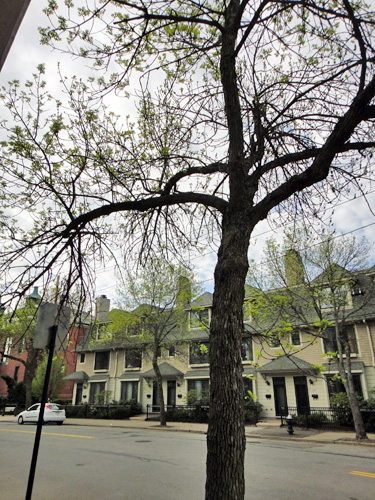
my tree with three more ashes across the street
A few weeks after I first started to watch my tree, I began to suspect that these other trees were the same kind of tree as mine. Once my tree started to produce its little purple flowers however, I became doubtful. Only about half of the trees I'd identified as also being ash trees had these flowers. The others seemed to be growing some other kind of leafy something, most likely a totally different kind of flower. But now that the true leaves have started to grow on all these trees, I can see that they are indeed all ash trees. So why the different flowers?
To explain, I have to return to the mystery of the sticky burrs (those crazy brown popcorn-looking balls that I had originally spotted on a few of the other ashes and then discovered on my tree). The sticky burrs turned out to be galls, which are growths caused by a tiny mite that lays its eggs in the male ash tree flowers. Some ash trees, like mine, produce only male flowers. The male flowers are the purple pollen-producing clusters that were all over my tree.
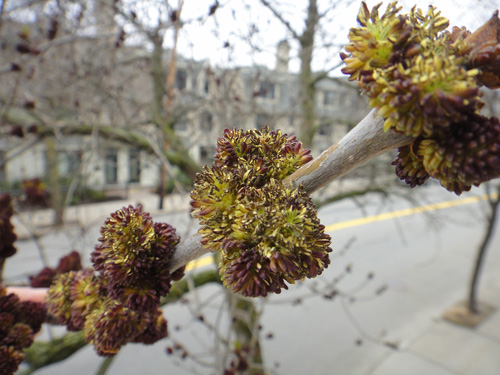
Down the street, there is an ash tree that has entirely different looking flowers. The bark on this tree is the same as mine. The leaves are the same. The structure of the twigs and the pattern of growth are all the same. The only difference is the flowers.
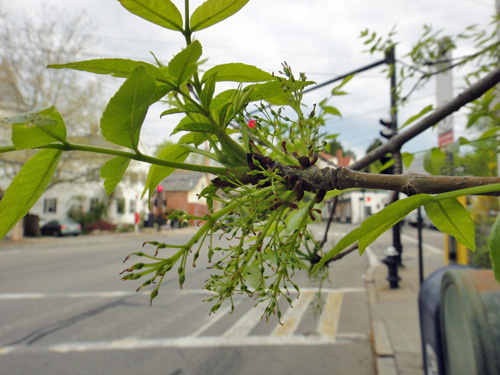
These have to be the female flowers! They are like long fingers reaching out to catch the pollen on tiny red tips.
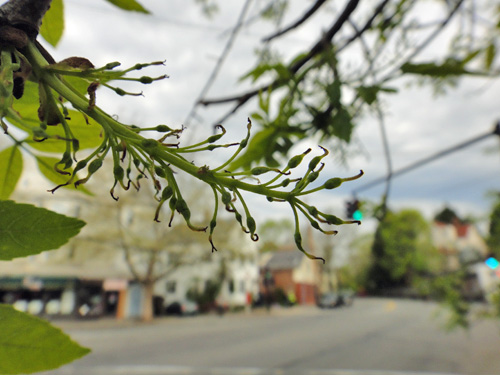
Another sign that this is a female ash tree is the fact that there are no droppings under this tree like there are under the male ash trees. The male trees like mine have recently shaken off all of their pollen-laden flowers and covered the sidewalks beneath them with little brown tree poops.
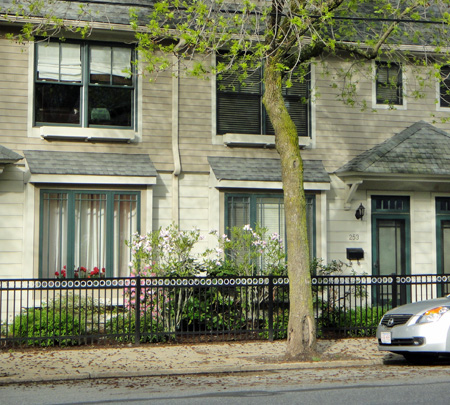
male ash tree surrounded by droppings
But if there are no pollen-producing flowers on this female tree, where does she get pollen for fertilization? Well... from the tree in the very next sidewalk cutout: a big all-male ash tree. Awwww, they're a couple!
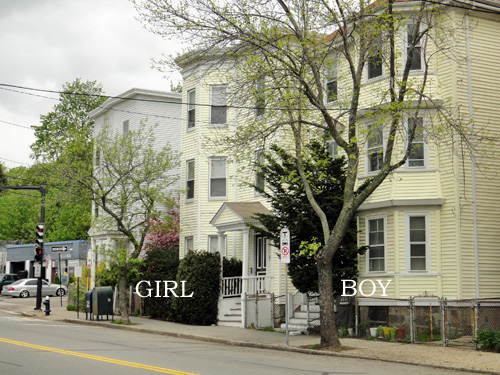
After I discovered this little couple, I decided to take a closer look at the ash trees right around mine (there are 5 directly across the street). You can spot the female right away from how clean the sidewalk is beneath her. She's the one without a ring of poopy-looking flowers underneath her.
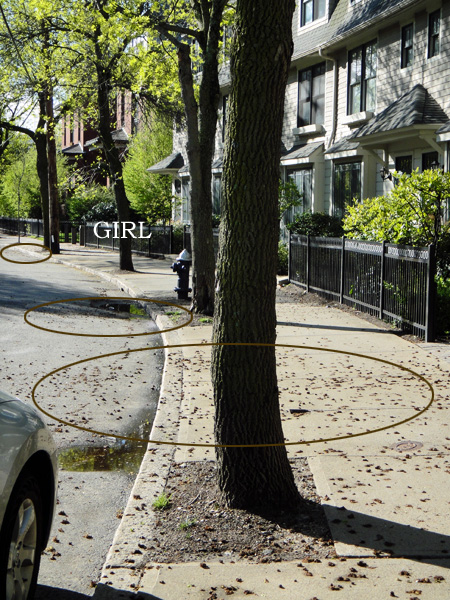
But here's the really fascinating thing. Of the five ashes across the street, 2 are boys like mine, there's the 1 girl in the middle, and the other two trees are -- get this! -- both.
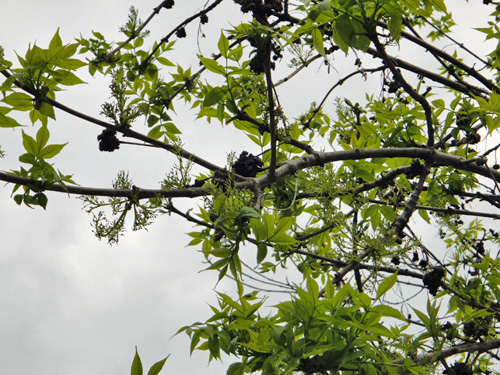
They have obvious male flower clusters still hanging on some of their twigs but they also have tons of the finger-like female flowers. How cool is that?! I've said this before, but it bears repeating: trees are weird.
(I found this website really helpful in identifying the different ash tree flowers.)

my tree with three more ashes across the street
A few weeks after I first started to watch my tree, I began to suspect that these other trees were the same kind of tree as mine. Once my tree started to produce its little purple flowers however, I became doubtful. Only about half of the trees I'd identified as also being ash trees had these flowers. The others seemed to be growing some other kind of leafy something, most likely a totally different kind of flower. But now that the true leaves have started to grow on all these trees, I can see that they are indeed all ash trees. So why the different flowers?
To explain, I have to return to the mystery of the sticky burrs (those crazy brown popcorn-looking balls that I had originally spotted on a few of the other ashes and then discovered on my tree). The sticky burrs turned out to be galls, which are growths caused by a tiny mite that lays its eggs in the male ash tree flowers. Some ash trees, like mine, produce only male flowers. The male flowers are the purple pollen-producing clusters that were all over my tree.

Down the street, there is an ash tree that has entirely different looking flowers. The bark on this tree is the same as mine. The leaves are the same. The structure of the twigs and the pattern of growth are all the same. The only difference is the flowers.

These have to be the female flowers! They are like long fingers reaching out to catch the pollen on tiny red tips.

Another sign that this is a female ash tree is the fact that there are no droppings under this tree like there are under the male ash trees. The male trees like mine have recently shaken off all of their pollen-laden flowers and covered the sidewalks beneath them with little brown tree poops.

male ash tree surrounded by droppings
But if there are no pollen-producing flowers on this female tree, where does she get pollen for fertilization? Well... from the tree in the very next sidewalk cutout: a big all-male ash tree. Awwww, they're a couple!

After I discovered this little couple, I decided to take a closer look at the ash trees right around mine (there are 5 directly across the street). You can spot the female right away from how clean the sidewalk is beneath her. She's the one without a ring of poopy-looking flowers underneath her.

But here's the really fascinating thing. Of the five ashes across the street, 2 are boys like mine, there's the 1 girl in the middle, and the other two trees are -- get this! -- both.

They have obvious male flower clusters still hanging on some of their twigs but they also have tons of the finger-like female flowers. How cool is that?! I've said this before, but it bears repeating: trees are weird.
(I found this website really helpful in identifying the different ash tree flowers.)
